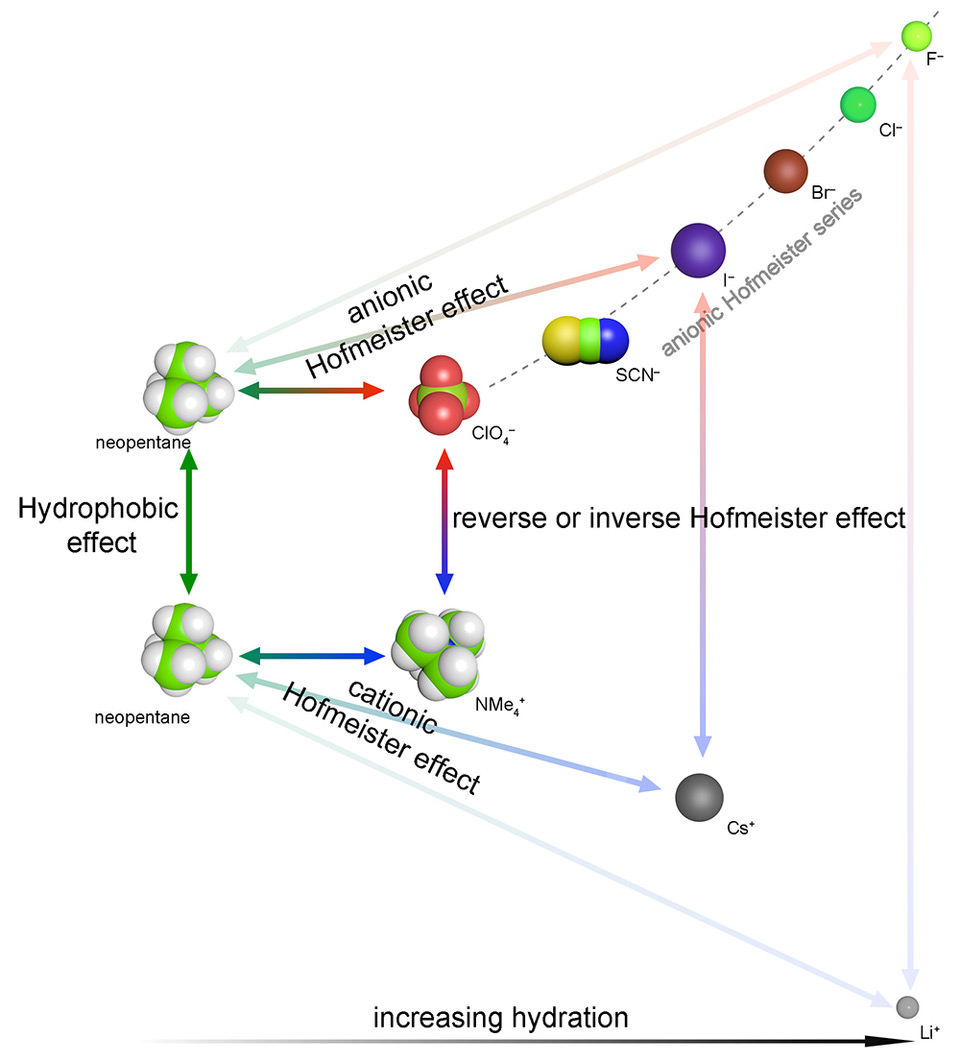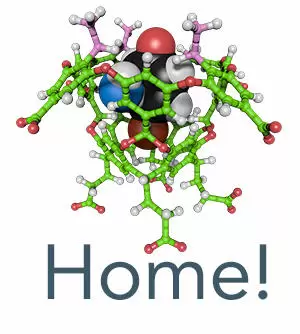
An alternative facet to our work with nano-capsules and peptides/proteins is the gathering and interpretation of data with the aim of creating an improved physical picture of the hydrophobic and Hofmeister effects. The hydrophobic effect (the phenomenon whereby oil and water don’t mix), and the Hofmeister effect (often interpreted in terms of how salts affect the hydrophobic effect), are of immense importance in the biological realm and hence the treatment of disease. However, at the atomistic level, there are many open questions regarding how specific non-covalent interactions lead to these gross overall phenomena.
This work primarily uses a combination of Isothermal Titration Calorimetry, Nuclear Magnetic Resonance spectroscopy, Dynamic Light Scattering (DLS), UV-vis and fluorescence spectrometry, to probe a variety of different systems. In particular we are interested in the hydration of different molecular surfaces, and how cations and anions interact with the non-polar or charged areas in a solute. To aid us in these endeavors we collaborate with computational chemists who help us create an atomistic perspective of water solvation of, and ion affinity to, different solutes.

